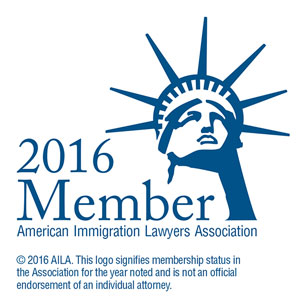BALCA ON EMPLOYEE REFERRAL PROGRAMS UNDER PERM
Cora-Ann V. Pestaina
I first wrote on the subject of the employee referral program with incentives in April 2010 shortly after the Department of Labor announced at a stakeholders teleconference that it had established criteria about the employee referral program, http://cyrusmehta.blogspot.com/2010/04/dol-update-on-perm-and-prevailing-wage.html. The Board of Alien Labor Certification Appeals (BALCA) recently issued two decisions that mostly adopt the DOL’s new requirements regarding employee referral programs, which is the subject of this article. Indeed, BALCA has been very busy recently issuing many decisions, http://bit.ly/elYpsb, in various aspects of labor certification practice, and it is incumbent on all stakeholders to keep up with them to avoid the pitfalls resulting in the denial of the application.
As a background, an employer has to conduct a good faith recruitment of the labor market in order to obtain labor certification for a foreign national employee. Obtaining labor certification is often the first step when an employer wishes to sponsor a foreign national employee for permanent residence. An employee referral program is one of the recommended recruitment steps under 20 C.F.R. §656.17(e)(4)(ii)(G) that an employer may undertake to establish that it made a bona fide effort to recruit qualified US workers.
Previously, employers had been allowed to utilize their existing employee referral program and to document its use by submitting a description of the program. In response to audits, the DOL had previously accepted photocopies of pages from employees’ handbooks describing the ongoing program. This clearly complied with 20 C.F.R. §656.17(e)(4)(ii)(G), which states, “The use of an employee referral program with incentives can be documented by providing dated copies of employer notices or memoranda advertising the program and specifying the incentives offered.” At the stakeholders teleconference, the DOL indicated for the first time that it would henceforth require more from employers who utilize the employee referral program in fulfillment of one of the three additional forms of recruitment required for professional positions under the current labor certification process known as PERM. In August 2010, the DOL published PERM FAQ 11 (available at http://www.foreignlaborcert.doleta.gov/pdf/PERM_Faqs_Round_11_08032010.pdf) wherein its new requirements were clearly imposed.
Although 20 C.F.R. §656.17(e)(1)(ii)(G) does not so require, PERM FAQ 11 set forth that the DOL now requires the employer to document its use of an employee referral program by providing dated copies of its notices or memoranda advertising the program and specifying the incentives offered and document that employees were made aware that they could refer applicants to the specific position sponsored under the PERM labor certification application. For example, employees may be notified via the employer’s internal website. But the DOL specifically, without explanation, excluded the Notice of Filing provided to satisfy 20 C.F.R. §656.10(d) as being sufficient for this purpose. In Clearstream Banking, S.A., 2009-PER-15 (Mar. 30, 2010), BALCA established that an ongoing intranet posting is acceptable to communicate the program provided it could be established that there was an employee referral program with incentives.
Throughout 2010, there continued to be various anecdotal reports of DOL audits focused on the use of the employee referral program. Now, two recent BALCA cases have shed some additional light on the use of employee referral programs.
In Matter of Sanmina-Sci Corporation, 2010-PER-00697, (Jan. 19. 2011), the DOL Certifying Officer (CO) found that the employer failed to provide adequate documentation of its employee referral program with incentives. The employer had provided the DOL with a flyer titled “Employee Referral Program” dated July 10, 2000 announcing the incentives and an Employee Referral Program Form dated “Rev. 10/31/03.” The CO cited 20 C.F.R. §656.17(e)(1)(ii) in support of the finding that these dates did not fall within the recruitment period of 30 to 180 days prior to the filing of the labor certification. The employer argued, in its request for review and appellate brief to BALCA, that it provided adequate documentation under the standard set forth for an employee referral program in 20 C.F.R. §656.17(e)(4)(ii)(G). The employer had clearly specified the incentives of the employee referral program, the dates of the program and the fact that the program was in effect as of the date of the recruitment report. The employer argued that the facts of its case were similar to Clearstream Banking, S.A., where BALCA stated, “…a generic employee referral program with incentives, the description of which is available to employees may be sufficient to be a step under section 656.17(e)(1)(ii)(G), even if the particular job for which labor certification is being sought is not individually promoted under the program.” The employer pointed out that although the regulations do not require that the PERM position be specifically promoted under the employee referral program, its advertisement of the job on its career web page was sufficient to make employees aware of the opening.
First, BALCA rejected the CO’s argument that the employee referral program was dated outside the recruitment period of 30 to 180 days prior to filing the PERM application. BALCA pointed out that 20 C.F.R. §656.17(e)(1)(ii)(G) only requires dates establishing that the program was in existence at the time of the recruitment for the PERM position and it cannot be reasonably interpreted to require that the dates on the program fall within the specified periods for other forms of recruitment, such as Sunday newspaper advertisements or a job order on the DOL’s own job bank website. Then, BALCA held that in order for an employer to adequately demonstrate its compliance with 20 C.F.R. §656.17(e)(1)(ii)(G), it must document that (1) its employee referral program offers incentives to employees for referral; (2) the program was in effect during the PERM recruitment period; and (3) the employees were on notice of the job opening.
BALCA soon spoke again on the subject of the employee referral program and held, in Matter of AQR Capital, 2010-PER-00323 (Jan. 26, 2011), that the employer had adequately provided evidence in support of each of the three elements set forth in Matter of Sanmina-Sci Corporation. The employer’s PERM application indicated that it utilized its employee referral program as one of the three additional recruitment steps to advertise for the professional PERM position. The PERM application indicated that the employer advertised with the employee referral program from July 10, 2007 to August 10, 2007. Upon audit, the employer documented its use of an employee referral program by submitting an undated notice of its program which described the incentives offered. The employer’s recruitment report also indicated that 45 (out of a total of 49) applicants for the PERM position had learned about the position through the employee referral program. The CO denied on the ground that the employer did not submit dated copies of the program.
BALCA reiterated that the dated copies referred to in 20 C.F.R. §656.17(e)(1)(ii)(G) are solely for the purpose of establishing that the employee referral program existed at the time of recruitment for the PERM position and not to prove that the dates on the program fell within the same specified recruitment period applicable to other forms of recruitment. BALCA held that (1) the employer submitted a copy of its employee referral program that specified incentives offered; (2) although the program was not dated, the employer’s audit response contained sufficient evidence to demonstrate the existence of the program during the recruitment period; and (3) that the employer’s employees were on notice of the particular job opening. In light of the fact that more than 90% of the applicants for the PERM position learned about it through the employee referral program, BALCA determined it would be ludicrous to question the program’s existence and effectiveness.
BALCA is well aware that, with the exception of requiring dated copies of the employee referral program, it has basically adopted the requirements set forth in PERM FAQ 11, despite the DOL’s possible violation of the Administrative Procedure Act (APA), P.L. 79-404, which prohibits the imposition of new requirements without providing an opportunity for notice and comment. In Matter of Sanmina-Sci Corporation, BALCA specifically addressed this in a footnote but stated that the CO could not be assured that the recruitment step had any connection to an employer’s specific efforts to fill the PERM position and therefore it is implicitly required that the employer provide documentation to show that the employee referral program was in effect during the recruitment period and that employees were aware of the opening.
In light of these two recent cases, my previous advice on this issue still stands. Employers may want to consider adding an “available positions” section at the end of the employee referral program description, including a copy of the specific PERM ad(s) and posting the program in a conspicuous location on the business premises for a specific number of days (and publishing via employer’s intranet, if any) as they do with the Notice of Filing required under 20 C.F.R. §656.10(d). Interestingly, BALCA, in Matter of Sanmina-Sci Corporation, also expressed some bafflement over the fact that the employer’s Notice of Filing cannot be used to prove that employees were made aware of the specific PERM position. However, in that case, since the employer also had an internal web posting, BALCA declined to address the question of whether the Notice of Filing, standing alone, could serve as proof that employees were made aware of the position for which the PERM application was filed.
Posting the employee referral program with an “available positions” section will establish both that the program was in effect during the PERM recruitment period and that the employees were on notice of the job opening. It would also be a good idea to execute a brief memorandum confirming the existence of the employee referral program, describing how the company’s employees were made aware that they could refer applicants to the specific PERM position and listing how many applications, if any, were received. In this manner, employers can be certain that they have done enough to survive an audit. Well, at least until the next rule change.




